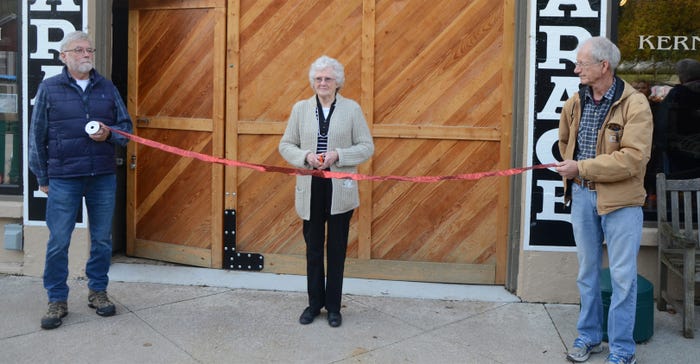
With a population of less than 200, you might be forgiven if you haven’t heard of the town of Brownville, Neb. But Brownville, nestled in the bluffs of the Missouri River in the southeast part of the state, has ag roots that run deep.
It’s the place that Daniel Freeman, in the early morning hours of Jan. 1, 1863, made the first claim under the 1862 Homestead Act.
It’s where Nebraska's first apple tree was planted, where the first alfalfa field was planted in the state, and where the state’s first railcar of wheat was shipped from.
Perhaps most notably, it’s where Robert W. Furnas, second governor of Nebraska, resided — and where he founded Nebraska Farmer.
A base of westward expansion
“Brownville was a base for a lot of things to be initiated in westward expansion — especially when it comes to agriculture,” says Kellie Kennedy, a Brownville Historical Society board member who raises corn, soybeans and cattle with her family in Nemaha County.
In October, the Brownville Historical Society honored these strong ag roots when Melva Sage, a descendant of Furnas, cut the ribbon to the newly renovated Wheel Museum. The Wheel Museum — formerly the McInnich and Kerns Ford Garage — houses numerous artifacts, documents and photos of early agriculture in Brownville and southeast Nebraska. The new museum name comes from its housing several wheel-related items — wagons, carriages and old automobiles.
The collection includes fish nets from Brownville’s commercial fishing days; photos of orchards, vineyards and articles from the region’s early days as a as part of the commercial fruit belt; antiques, a surrey carriage, a freight wagon and other homesteading antiques; and numerous agricultural tools and implements — ranging from a Campbell corn drill to a John Bean apple polisher to a Minneapolis steam engine.
In addition, one exhibit is dedicated to Robert W. Furnas and the publications he founded, including the Nebraska Advertiser and Nebraska Farmer. This exhibit includes reprints of covers from Nebraska Farmer’s 75th, 100th, 125th, and 150th anniversaries, and a reprint of the first issue printed in October 1859. It also features the original Nebraska Farmer desk — donated by Carolyn Simon of Chowchilla, Calif., whose family had owned the desk since Nebraska Farmer was owned by Fred A. Heath, who was a relative of Jack Simon, Carolyn’s late husband.
Important for education
“To me, education is the big reason for preservation — to educate the young, the generations to come. They aren’t as familiar with this kind of equipment,” says Bob Chitwood, Brownville Historical Society president. “There’s a lot of big farm equipment today, but most of us — including myself and my generation — are unfamiliar with these older, heavier pieces of equipment. It’s no wonder the farm community was strong; they were working around heavy iron all the time.”
After taking a deeper dive into some of these artifacts, Kennedy notes, the historical society board members learned some new things. Take, for example, that apple polisher. “When we researched the manufacturer, it’s a company, through acquisitions and mergers that is still in business today and manufactures sprayers — that company [John Bean Manufacturing Co.] became FMC [Food Machinery Corp.],” Kennedy says. “It’s those kinds of things we researched, and found out that these companies through the years are still viable businesses, and still making ag equipment."
Around 20 volunteers from southeast Nebraska and northwest Missouri helped sort through various documents, photos and artifacts — a process that took two years. In addition, the old garage had to be renovated. The back wall was removed, and an addition was put in to accommodate all of the heavy antique farm equipment on the lower level. And the job isn’t over yet.
“Our job is not done as keepers of the records,” Kennedy adds. “Our job is not done researching the magnitude and the impact of what Furnas and others did in the late 1800s for this corner of the state, and the state as a whole. Hopefully, over the next couple of years, we can bring out some more of those materials for the public to see and to learn from.”
About the Author(s)
You May Also Like






